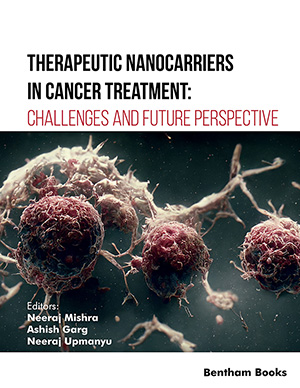Abstract
Cervical cancer (CC) is women's fourth most occurring malignancy, with a high death rate. Every CC patient is related to infection with high-risk human papillomaviruses (HPV), predominantly transmitted through sexual contact. Early diagnosis of CC helps treat surgical removal of tumours, leading to an increased patient life span. However, existing detection methods of CC, like Pap smear test, have very low sensitivity. Even though preventive vaccines for CC are doing well, they cannot protect against all HPV cancers and potential side effects. Additionally, chemotherapy for CC has had a detrimental impact because of the lack of selective tumour cell toxicity, resulting in higher adverse effects. Despite significant progress in oncology research, efficient CCs treatment is still challenging, and target-selective drug delivery formulations with a systematic release mechanism potentially avoid and reduce biotoxicity. Recent developments in nanomedicine and nanotechnology are creating more interest in developing new treatment strategies for CC treatment. Materials used in nanomedicine development are made up of synthetic or natural. These nanoparticles pointedly impacted therapeutic applications with enhanced specificity and unique personalized assets. Surface-engineered nanoparticles offer a massive possibility for compatibility with biological agents, including nucleic acids, proteins, etc. Surface fictionalization nanoparticles with targeting ligands further help in selective targeting. The present study summarizes recent advancements in surface-modified nanoparticlebased CC treatment methodologies.
Keywords: Active targeting, Cervical cancer, Nanotechnology, Passive targeting, Surface modifications.






















